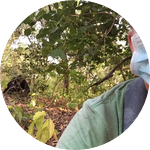About This Project
I will determine the relationship between two tamarin species who are known to associate. The Emperor and Saddleback Tamarin are known to form large groups to have greater foraging efficiency and it is suggested to reduce the risk of predation by creating the opportunity for the spotting and identification of predators. It is known that these two species react to each other, but I want to understand if they really do rely on one another for protection against predators.
Ask the Scientists
Join The DiscussionWhat is the context of this research?
It is known that the Emperor and Saddleback tamarin associate with one another in the wild for foraging bouts. It has been determined that they can recognize and react to the opposites' long call. This call is for territoriality and defense though. These large groups are also suggested to be used for anti-predator responses. It has been suggested that the alarm calls of each species will elicit a protection response in the other when there is a predator nearby. I want to know if this is really true and display the interconnnectivity and reliance between these two amazing primate species.
What is the significance of this project?
Understanding the relationship between these two species may show the interconnectivity and reliance of jungle species. If there is a dependence on the opposite species for eliciting anti-predator responses via alarm calls, there may be a conservation stand here. Showing that the species are reliant on one another brings them to a new level of social and cognitive ability. It also shows that they are dependent on all the other species of the jungle, pushing for the conservation and protection of the entire jungle, not just one species or group.
What are the goals of the project?
To determine the relationship between two similar tamarin species, further the understanding of their social relations, and give more strength to a holistic conservation effort.
Budget
The travel to my research location is key to participating in the research and gathering useful data on the species. Without being in the natural habitat, it is difficult to determine the relationship between the two wild tamarin species. These primates are wild animals found in the jungles of the Amazon Rainforest. For there to be reduced bias and lessen the behavioral effects of domestic situations, I need to go to where the monkeys are. This travel requires three planes, a bus, a boat, and a hike. My research station is in the heart of the Amazon and I have to go there to find out amazing things about these primates.
The field site costs are the majority of me research costs. The station is equipped with running water, three provided meals a day, and protection from the wilds of the Amazon. Without the safety of the station, my research may fail. The ability for me to stay in the thicket of the jungle safely with minimal provisions is required for my data collection.
Endorsed by
Meet the Team
Kaelyn Melinne Dobson
In recent years, my passion for primates has grown in strength. My hope for my academic future is to become a primatologist, expanding our knowledge of these amazing animals and how to protect them in a changing world. I am eager to continue my professional growth through education, training, and hands-on experience, including my research. My thesis-based masters degree from Iowa State University is the next step on my path to making a difference for primates.
I was fortunate to obtain a wide range of experiences during and after my undergraduate degree that have guided me to my current adventure. Each of the experiences pieced my passions and understandings together, leading me to graduate school at Iowa State University in the Biological Anthropology department. I am thankful for the amazing facilities, people, and animals I have had the privilege to work with.
My goal is to make a difference in the conservation efforts of the Amazon jungle and its species by letting people see and understand how amazing primates are. After obtaining a PhD, I hope to be a faculty member at a research driven university, sharing my passion with students while furthering my primate behavioral research. I believe that showing people how similar primates are to humans in their relationships and attempts to avoid danger, my research can spark a new fire in conservation.
Project Backers
- 9Backers
- 9%Funded
- $274Total Donations
- $30.44Average Donation


